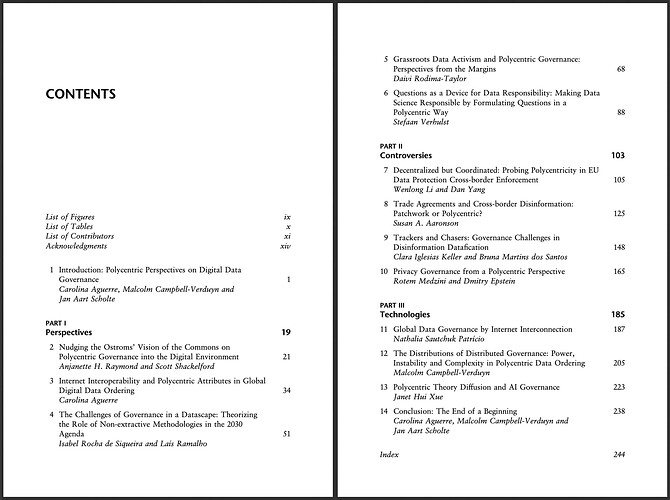Last week I started reading the newly released Global Digital Data Governance: Polycentric Perspectives which was released as an open access book in January. I learned about the book from the BlockChainGov Discord in the #polycentricity-and-pluralism channel (link) where there is discussion of coordi-nations and lots of resource sharing.
Anyways, I am a few chapters in and so far it is really good. They are applying Ostrom’s work to data governance, and at least the initial chapters lay the ground work for polycentric governance.
I have previously written about going “beyond the centralization-decentralization dichotomy” and the way through is obviously ![]() polycentrism. So this book is very relevant to us.
polycentrism. So this book is very relevant to us.
I have decided to publish my (condensed) chapter notes here so you can follow along. The book is open access so you can download it for free (even a Kindle version!) and read along. Each chapter is available as its own paper on the book website if you want to just pick and choose. Many of these chapters were presented as papers at the Internet Governance Forum in 2022.
Ask questions, read and add your own comments, or add other references as you like.
Each chapter will be a separate comment below which you can comment on. Here is the TOC for your reference:
